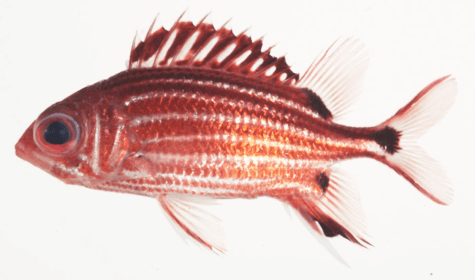
ITHACA, N.Y. — People often say that a suspicious situation “smells fishy,” but perhaps that should soon change to “sounds fishy.” New research from a team at Cornell University reveals fish are actually much more likely to “talk” to each other using sound waves than scientists thought. According to their findings, certain fish have been communicating with each other in this manner for at least 155 million years!
“We’ve known for a long time that some fish make sounds,” says lead study author Aaron Rice, a researcher at the K. Lisa Yang Center for Conservation Bioacoustics at the Cornell Lab of Ornithology, in a university release. “But fish sounds were always perceived as rare oddities. We wanted to know if these were one-offs or if there was a broader pattern for acoustic communication in fishes.”

(CREDIT: Jeffrey T. Williams)
The team examined a branch of fish called ray-finned fishes for this project. These vertebrates, or fish with a backbone, make up an astounding 99 percent of the planet’s known species of fish. Scientists identified 175 “fish families” containing two-thirds of fish species that either do, or are at the very least likely to, communicate via sounds.
‘Fishes have voices, too!’
After taking a closer look at the fishes’ family trees, it became clear to the research team that these sound-based chats are quite important. Why? Over the course of millions of years, the mechanisms behind these communications changed and improved at least 33 times.
“Thanks to decades of basic research on the evolutionary relationships of fishes, we can now explore many questions about how different functions and behaviors evolved in the approximately 35,000 known species of fishes,” explains study co-author William E. Bemis, Cornell professor of ecology and evolutionary biology in the College of Agriculture and Life Sciences. “We’re getting away from a strictly human-centric way of thinking. What we learn could give us some insight on the drivers of sound communication and how it continues to evolve.”
HEAR IT: CLICK TO LISTEN
- Oyster Toadfish, William Tavolga, Macaulay Library
- Longspine squirrelfish, Howard Winn, Macaulay Library
- Banded drum, Donald Batz, Macaulay Library
- Midshipman, Andrew Bass, Macaulay Library
Study authors used three primary sources of information for this study. The first was existing recordings and scientific papers focusing on fish sounds. The second was the anatomy of these fishes. More specifically, does this species feature an anatomy capable of creating sounds, such as certain bones, an air bladder, or sound-specific muscles? Finally, the researchers looked for any relevant information within 19th century literature, put together before the invention of underwater microphones.
“Sound communication is often overlooked within fishes, yet they make up more than half of all living vertebrate species,” concludes study co-author Andrew Bass, the Horace White Professor of Neurobiology and Behavior in the College of Arts and Sciences. “They’ve probably been overlooked because fishes are not easily heard or seen, and the science of underwater acoustic communication has primarily focused on whales and dolphins. But fishes have voices, too!”
The findings appear in the journal Ichthyology & Herpetology.
